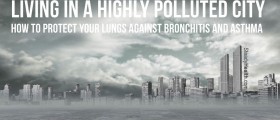
Pollution, especially that of air, is something one can hardly avoid these days, especially if he/she lives in a city. The greater the air pollution, more substantial the ill-effects on our overall health and the health of our cardiovascular system are. Since we all differ, so does the intensity and severity of the pollution related ill-effects one gets befallen by. In addition, this is also dependable on the kind of agent people get exposed to, the intensity of exposure, health conditions, and last but not the least – one's genetics.
When it comes to the ill effects pollution is known to bring about most often, they include such as the direct malevolent effects on our overall health (including biochemical and physiological changes), all the way to the various complications with breathing, intensive coughing, aggravation of the respiratory system, and cardiac disorder. In case all of the aforementioned is not registered and treated in due time, any of these medical conditions can quite easily turn into a much serious one, making hospitalization the one and only option for avoiding the death case scenario.
Respiratory system – it is well known that the overall quality of the air we come to breathe in on regular basis determines the level of our health in general. The quality of air also affects the overall health of our lungs, as well as the respiratory system. However, air is also comprised of substances other than oxygen, like pollutants, which exude most unwanted side effects on the person's health. Our respiratory system is regarded as highly delicate and sensitive due to the fact that it is covered with mucous membrane. The lung cells located in the lung tissue are most often harmed by such air pollutants as ozone, metals and free radicals.
Cardiovascular system – another highly dangerous and unpleasant side of air pollutants is the fact that, once they find their way inside the person's body through absorption, they reach the blood and this way are transported directly to the person's heart. The pollutants in question then start inducing a number of undesired and dangerous side effects, which lead to numerous structural damages – necrosis, degenerative and inflammatory reactions. In addition, certain pollutants are known for their potential to negatively affect the heart's contractility, and ultimately bring about the occurrence of arrhythmia of varying intensity, severity and “life span”, i.e. duration.

















Your thoughts on this
Loading...